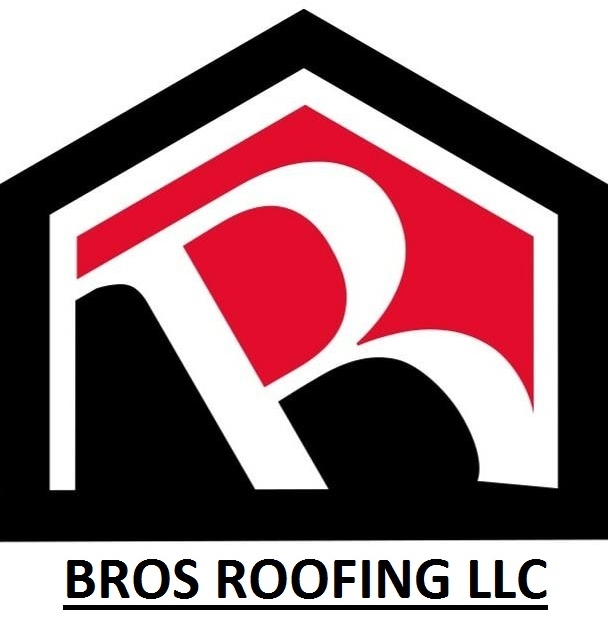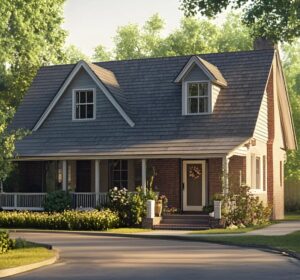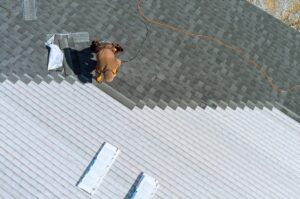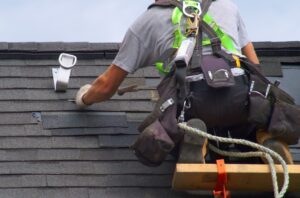You’d think a roof would age evenly—after all, it’s the same material, installed at the same time, covering the same house. But here’s the reality: some parts of your roof are like that friend who always gets sunburned before anyone else at the beach—they just can’t seem to catch a break.
From sun exposure to drainage patterns, several factors can cause one section of your roof to look worn while others still seem fresh. Understanding why this happens not only helps you plan for repairs but can also extend your roof’s overall life.
Let’s take a closer look at why certain areas of your roof might be aging faster and what you can do to even the playing field.
1. Sun Exposure and Roof Orientation
The sun is a roof’s frenemy—it keeps things dry but also causes slow, steady wear. In Grand Junction and across Western Colorado, high-altitude UV rays are particularly intense.
- South- and west-facing slopes get the most sun exposure, leading to faster fading, cracking, and loss of shingle granules.
- North-facing slopes tend to age slower in terms of UV wear but can have their own challenges, like moss and algae growth from staying damp longer.
What You Can Do:
Opt for UV-resistant roofing materials, and schedule regular inspections to keep sun-exposed areas in check before damage spreads.
2. Water Drainage Patterns
Water is relentless—it always finds the easiest path downhill. If your roof has areas where water flows more heavily, those spots often wear out faster.
- Roof valleys collect and channel large amounts of water, increasing the risk of shingle deterioration and flashing issues.
- Low-slope sections may not drain as quickly, allowing water to linger and speed up wear.
- Clogged gutters can cause water to back up under shingles at the edges.
What You Can Do:
Keep gutters clean, check valleys for debris, and have your roofer inspect high-drainage areas more frequently.
3. Snow and Ice Accumulation
In Colorado’s snowy months, some roof sections bear the brunt of winter’s weight. Snow that slides down from higher slopes can pile up on lower sections, stressing the shingles and underlying structure.
- North-facing slopes hold snow longer, meaning extended exposure to moisture.
- Overhangs and eaves can form ice dams that push water back under shingles.
What You Can Do:
Ensure your attic is well-insulated and ventilated to reduce ice dam formation, and have a snow removal plan for heavy accumulations.

4. Tree Coverage and Debris Buildup
Trees can be both a roof’s friend and foe. Shade can protect shingles from harsh sun, but too much tree coverage can cause dampness, moss growth, and debris buildup.
- Branches overhanging the roof can scrape shingles during windstorms.
- Leaf buildup in valleys traps moisture and accelerates deterioration.
What You Can Do:
Trim back branches regularly and remove debris after storms or in the fall.
5. Poor Ventilation and Insulation
Your roof’s lifespan isn’t just affected by what’s on top—it’s also influenced by what’s happening underneath. Poor attic ventilation traps heat and moisture, which can warp shingles and cause premature wear in certain areas.
- Hot spots develop where ventilation is inadequate, often near ridges or in sections above poorly insulated rooms.
- Condensation buildup can damage the underside of the roof decking.
What You Can Do:
Work with a roofer to ensure your attic ventilation meets building code and is adequate for your roof’s size and design.
6. Flashing and Seal Weak Points
Flashing protects roof penetrations like chimneys, vents, and skylights. Because these areas are more vulnerable to leaks, they often require more frequent maintenance.
- Metal flashing can corrode or pull away over time.
- Sealant breakdown around vent pipes can allow water in, weakening shingles in those spots.
What You Can Do:
Schedule annual flashing inspections and replace sealant before it fails completely.
Why This Matters for Roof Longevity
When parts of your roof age faster than others, it doesn’t just affect curb appeal—it can shorten your roof’s overall life. A single weak area can let in water, which spreads damage to otherwise healthy sections. By understanding which areas are most vulnerable, you can focus maintenance efforts where they’ll have the biggest impact.
Protect Every Part of Your Roof with Bros Roofing
No roof ages perfectly evenly, but you can take steps to make sure it lasts as long as possible. Targeted maintenance, smart material choices, and regular inspections go a long way toward keeping every slope, valley, and ridge in top shape.
Bros Roofing in Grand Junction, Colorado knows exactly how local weather, elevation, and sun exposure affect roof wear. Their experienced team can identify high-risk areas, make timely repairs, and recommend solutions that help your roof age gracefully—without letting one trouble spot compromise the whole system.
If you’ve noticed uneven wear on your roof or just want peace of mind before the next season hits, call Bros Roofing today. Our team is here to give your roof the care it needs so it can protect your home for years to come.



